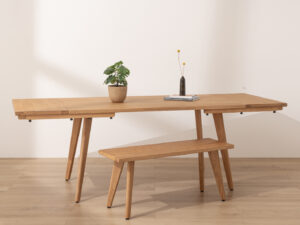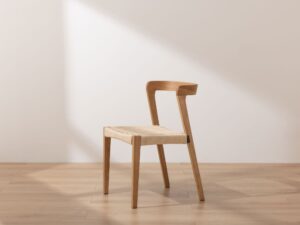Furniture Fire Regulations in the UK
Contents
- Home Furnishing Fire Safety At A Glance
- Furniture covered by the regulation
- Suppliers who may be affected
- Furniture Filling Requirements
- Furniture Labelling Requirements
- Record keeping
- How to tell whether furniture complies
- Other safety requirements
- Penalties
- Practical tips for landlords
- For further information and advice
- Other FAQs
Home Furnishing Fire Safety At A Glance
In the UK, the Furniture and Furnishings (Fire Safety) Regulations 1988 sets levels of fire resistance for domestic upholstered furniture and stipulates particular labelling requirements.
From the 1960’s to the late 1980’s, there was an increasing trend in the number of UK fire-related deaths in the home. In response to these worrying statistics, the UK government took action and introduced the Furniture and Furnishing (Fire Safety) Regulations in 1988, which were amended in both 1989 and 1993 respectively.
The regulations include six main elements;
- Filling materials must meet specified ignition requirements
- Upholstery composites must be cigarette resistant
- Covers must be match resistant
- A permanent label must be fitted to every item of new furniture (with the exception of mattresses and bed-bases)
- A display label must be fitted to every item of new furniture at the point of sale (with the exception of mattresses, bed bases, pillows, scatter cushions, seat pads, loose covers sold separately from the furniture and stretch covers)
- The first supplier of domestic upholstered furniture in the UK must maintain records for five years to prove compliance
Furniture covered by the regulation
The furniture fire regulation covers beds, headboards of beds, mattresses of any size, sofa beds, futons, nursery furniture, garden furniture, cushions, pillows and seat pads.
There are also various other furniture and upholstery items that aren’t covered by the regulation, which includes sleeping bags, bedclothes such as duvets, loose covers for mattresses, pillowcases, curtains, carpets and any furniture made before 1950.
In general, the safety provisions require that upholstery must pass the cigarette test, fillings must be fire retardant and the covers must pass the match test. All products that meet the requirement must have both a display label and the permanent label, and it is the retailer’s responsibility to ensure that the furniture has these correct labels.
Suppliers who may be affected
Anybody in the business supply chain, from the supply of materials for use in furniture through to the supply of the finished article, as well as re-upholstery and re-covering, are affected. Those included are manufacturers, retailers, importers, re-upholstery and re-covering services, those who supply second-hand furniture, landlords, estate agents, and letting agents.
For those importing furniture, they must make sure they have full traceability of what materials have been used. It is not advisable to rely solely on the tests conducted by overseas suppliers or manufacturers unless there is a guaranteed system of traceability in place. Importers should check the authenticity of any test certificates provided by suppliers, which should ideally be from a laboratory accredited to BS EN ISO/IEC 17025 by UKAS or a similar national accreditation body.
All manufacturers, importers and retailers are required to keep records to ensure traceability and compliance of all items of upholstered furniture. This includes statements from suppliers and the results of any tests carried out on the furniture and its components.
Retailers aren’t expected to be responsible for testing upholstered products unless they are acting as the prime importer. However, retailers must legally ensure that all products that are sold are safe and comply with fire resistance regulations.
Furniture Filling Requirements
Manufacturers and retailers need to ensure that the furniture they make or sell does not contain polyurethane foam and latex rubber. Furniture with more than one filling material needs to meet all requirements for each individual filling or the total composite needs to be tested.
Furniture should not be supplied with any upholstery composites that do not pass the cigarette test or with any permanent, loose, or stretch covers that do not pass the match test either.
Furniture Labelling Requirements
Display labelling is required to indicate the ignition resistance of each item of furniture and needs to be attached to all new furniture at the point of sale, with the exception of mattresses, bed bases, pillows, scatter cushions, seat pads, loose covers (sold separately from the furniture) and stretch covers. The design of the display label is left entirely to the manufacturer or importer.
Furniture sold as a collection of items, such as three-piece suites or a set of dining chairs must carry the appropriate display label on each individual item. In all cases, the display label must be attached to the furniture in a prominent position so that the label is clearly visible to a potential purchaser of the furniture and the wording on both sides can be read with reasonable ease.
Permanent fire safety labels are also legally required on upholstered items and furnishings to let people know that the item complies with British Fire Safety Regulations, and as the name states, stays permanently on the furniture. Many upholstered items contain foams, fillings and other materials that could potentially be flammable and because of this, items must have set levels of fire resistance determined through a series of flammability tests.
There are two versions of this label permitted. One, known as the ‘full label’, has full details of the supplier and another, called the ‘short label’, does not show the supplier’s details. The permanent label is an information label with some standardised wording and requires additional information that is specific to the product. The main function of the permanent label is to enable ‘traceability’ back up the supply chain.
It’s important to note that the first supplier of the furniture in the UK is responsible for ensuring the finished product carries the permanent label, which must be durable, securely attached, on loose and stretch covers and on each piece of furniture sold as a collection.
Record Keeping
It is important for all manufacturers, importers and retailers to be able to provide evidence of compliance with the fire safety regulations when it comes to applicable upholstery and furnishings. This information includes statements from suppliers, the results of any relevant tests that have been carried out on the furniture and its components, and the correlation of records to specific items of furniture.
For retailers, there are a number of things to ensure the manufacturer or importer has provided in addition this, including name and postal address for the first supplier in the UK, date of when the item was manufactured or imported, description of the filling materials and description of the covering materials.
It’s required that manufacturers and importers retain the information for a period of five years, starting from the date on which the furniture is supplied to the retailer. Retailers then need to obtain a Certificate of Compliance to the Furniture and Furnishings (Fire Safety) Regulations 1988 from the manufacturer or supplier/importer.
How to tell whether furniture complies
All new upholstered furniture must carry a permanent label with the heading “Carelessness causes fire”. This label is usually found behind a loose cover at the rear of the furniture or under a seat cushion and should contain the relevant details, including a batch code, that allows it to be traced to the manufacturer in case any issues are found with the safety of its production.
The law does not specifically state that this permanent label needs to be stitched in, but this is the best way in which to ensure that it is the original label that was supplied when the furniture was manufactured. This also prevents it from falling off over time or getting damaged. If the label does become detached for any reason, make sure you keep it in a safe place, especially if you plan on donating or selling your furniture in the future.
If you purchase a new piece of furniture but can’t find a permanent label, it may not comply with safety regulations and can potentially be dangerous to have in the home.
Other safety requirements
In addition to the specific rules on flammability, furniture must be safe in all other respects – for example, free from sharp edges and splinters. The general safety requirement is imposed by the General Product Safety Regulations 2005 and means if you make, import, distribute or sell consumer products in the UK, you are responsible for making sure they are safe for consumers to use, as well as following all legal requirements in relation to labelling.
There are further obligations imposed on ‘producers’ of furniture, which includes manufacturers and importers. This means they must adopt measures to be informed of the risks that they might be posed by products they have supplied, including sampling the product on the market, investigating complaints and informing distributors of risks. They must also take appropriate action where necessary, including investigating complaints, withdrawing the product, adequately and effectively warning consumers, recalling products and where producers know a product poses risks to the consumer, notify an enforcement authority in writing of this as well as the action that has been taken to prevent risk to the consumer.
Penalties
Upholstered furniture is subject to strict standards and must pass safety tests with regards to its flammability. Failure to comply with trading standards law can lead to enforcement action and to sanctions which may include a fine and/or imprisonment.
Trading standards officers will be looking for test certificates from accredited laboratories that show traceability and are relevant to the product manufactured or imported and placed on the market. Trading standards officers have powers to inspect products and related documents, so the documentation regarding quality assurance and traceability should be readily available on request.
Practical tips for landlords
Landlords and letting agents are included under the scope of the furniture fire regulations and must ensure that all furniture and upholstery provided in the property must meet the fire safety standard. These rules are particularly relevant if your property is let to tenants furnished, as these regulations apply to things like sofas, sofa beds, mattresses and even bean bags.
Always check labels on furniture and ensure it includes a permanent label. New furniture should comply with the regulations so if you buy furnishings brand new, you should be covered. However, it’s important to do your due diligence if purchasing furniture second hand.
To ensure that they comply with the regulation, a Landlord must ensure that all of their furniture is “fire-resistant”, otherwise they will be committing a criminal offence. This Regulation is enforced by local Trading Standards Officers and Landlords can be fined up to £5,000 and sent to prison for six months.
For further information and advice
There are plenty of resources where you can find more information and advice on furniture fire regulations, including;
- FIRA, Furniture Flammability Advice for Consumers: https://www.fira.co.uk/product/furniture-flammability-advice-for-consumers
- The Furniture and Furnishings (Fire) (Safety) Regulations 1988: https://www.legislation.gov.uk/uksi/1988/1324/contents/made
Other FAQs
When did fire regulations for furniture start?
From the 1960’s to the late 1980’s, there was an increasing trend in the number of UK fire-related deaths in the home. In response to these worrying statistics, the UK government took action and introduced the Furniture and Furnishing (Fire Safety) Regulations in 1988, which were amended in both 1989 and 1993 respectively.
How do I know if my couch is fire-resistant?
If your sofa is fire-resistant, it should have a fire label that indicates it meets fire safety standards. As a minimum, the label should display the caution, batch number/identification number, if the item includes a fire-resistant interliner and finally a summary of the measures which were taken to ensure compliance. They are most often found sewn under cushions or around the edges of an item. It shouldn’t be too difficult to find the fire label on your sofa. Start by lifting the cushions, checking under them and checking the area around where the cushions lay.
What is a fire label on furniture?
A fire safety label is legally required to be placed on all upholstered furnishings and other pieces of furniture sold in the UK, including sofas, armchairs and more. The purpose of the fire safety label is to assure that the item in question complies with British Fire Safety regulations. Each fire label must be permanent and must be fitted to every new piece of furniture sold.
Can you give away or sell a sofa privately without a fire label?
To be able to donate your upholstered item, such as a sofa, to a charity, the permanent fire safety label must be attached otherwise they will not be able to take it from you
Do leather sofas need fire labels?
Yes, all sofas including those upholstered in leather need a fire label to ensure they meet the fire-safety standards.
Considering A New Dining Table?
Our stunning dining tables are handmade with love here in the UK and come in a wide range of styles; from contemporary to rustic and farmhouse styles. We're certain you'll find one that looks great in your home.
Just give them a view at the very least 🙂


